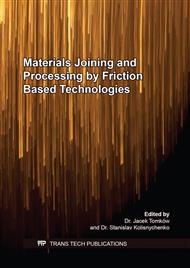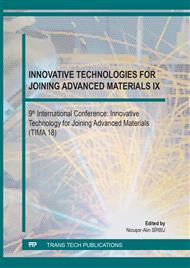p.1
p.7
p.16
p.21
p.27
p.36
p.46
p.52
p.58
General Aspects Concerning Possibilities of Joining by Friction Stir Welding for some of Couples of Materials Usable in the Automotive Industry
Abstract:
In recent years, due to its extraordinary qualities, friction stir welding process FSW has found its utility in more and more industrial applications in fields such as: aerospace, aeronautics, naval, automotive and railway. The paper summarizes several achievements in the FSW joining of couples of similar and dissimilar materials used in the automotive industry. There are presented aspects regarding the welding of ferrous metal materials (DD13), couples of non-ferrous metallic materials (Al Cu range) and steels with aluminum. The behavior of FSW of material couples in terms of analysis of microstructural improvements and mechanical characteristics is analyzed. The preliminary results obtained have shown that the FSW process can be successfully applied to the joining of the approached material couples, but with the use of optimized welding tools and technologies.
Info:
Periodical:
Pages:
27-35
Citation:
Online since:
May 2019
Price:
Сopyright:
© 2019 Trans Tech Publications Ltd. All Rights Reserved
Share:
Citation:



